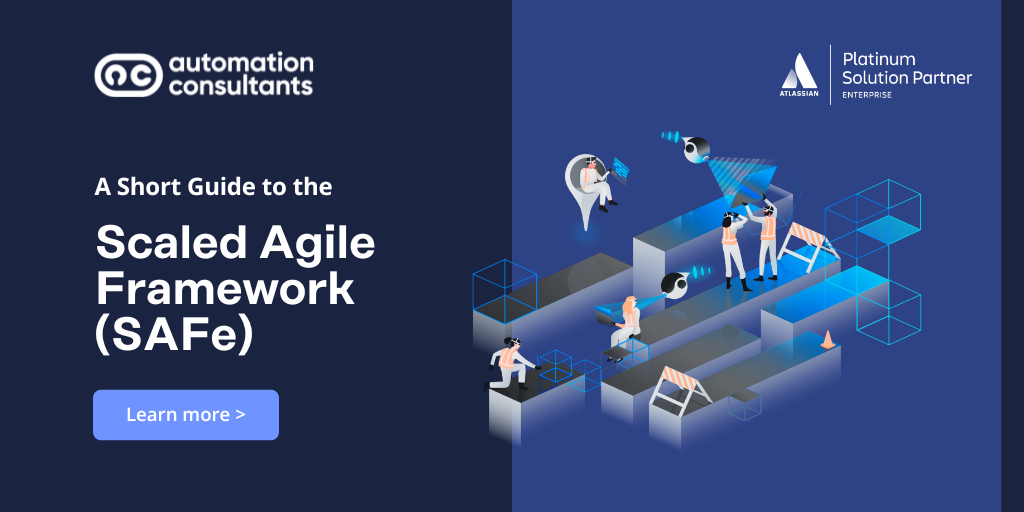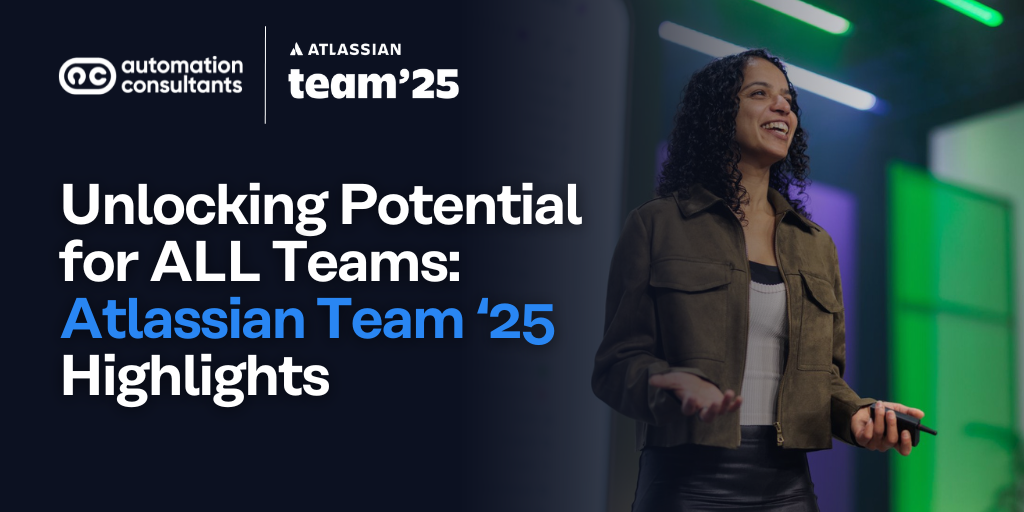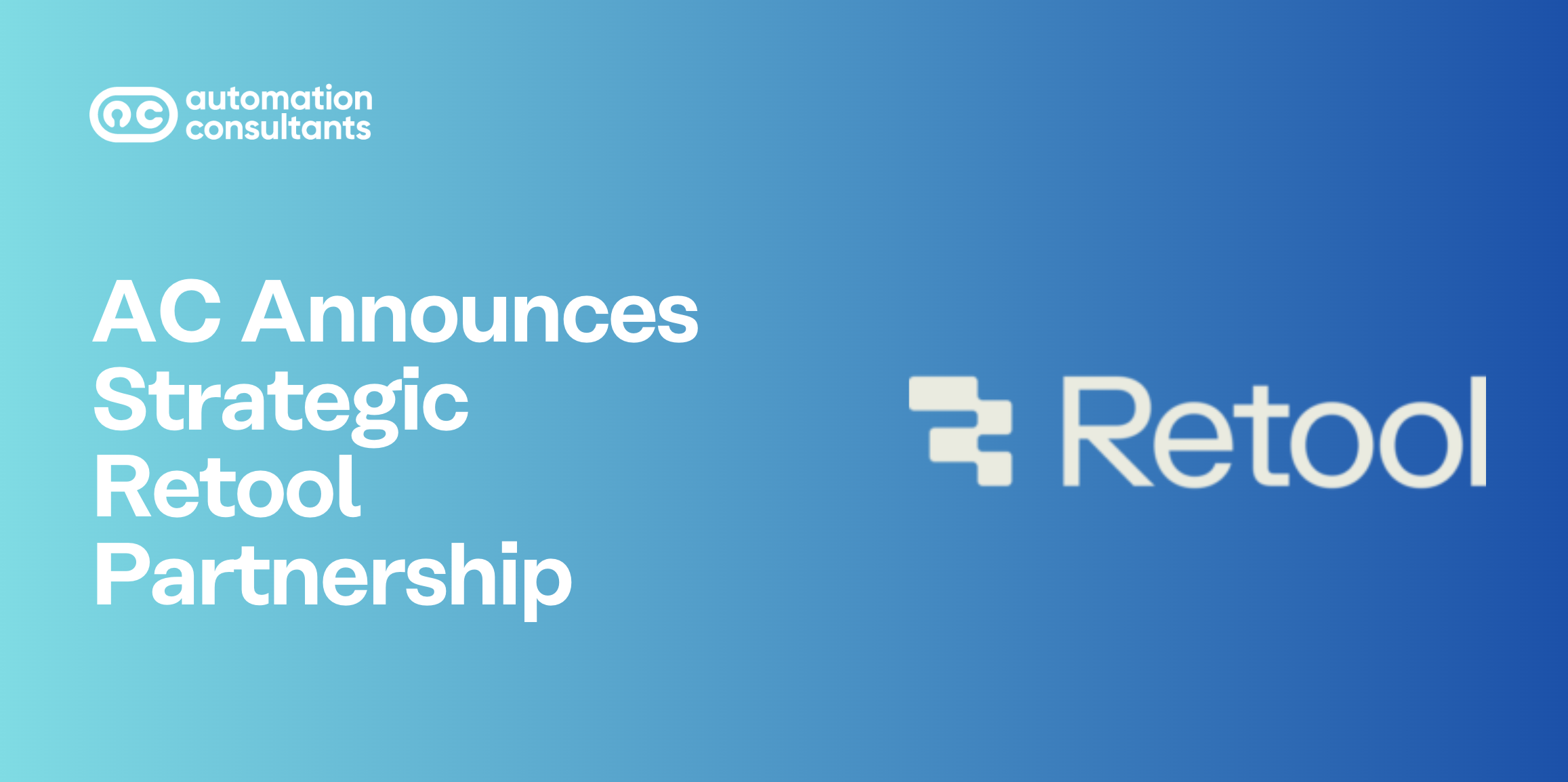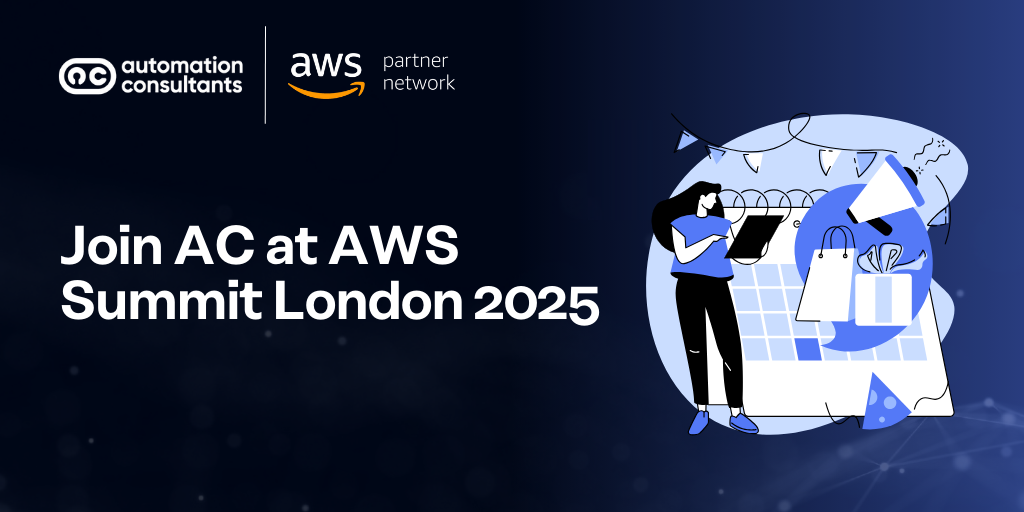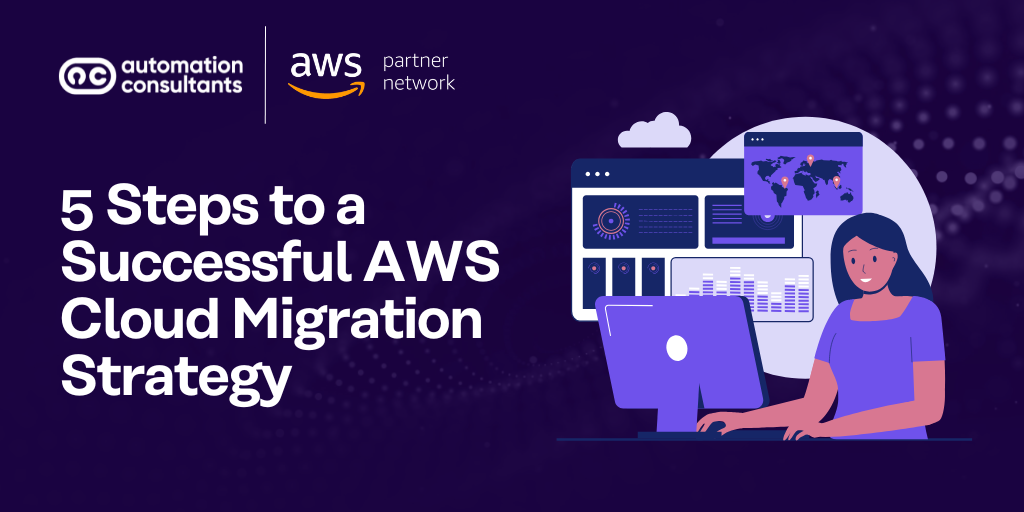A bit of background on SAFe
Since its inception in 2001, the Agile methodology has been widely adopted across organisations of all sizes. Agile enables multi-discipline teams to become more independent, more empowered, and to deliver greater value to their customers, faster.
As Agile practices expand across larger corporations, however, many of us have seen an increasing disconnect between traditional Executive and C-Suite waterfall thinking and self-led Agile teams.
The Scaled Agile Framework provides a solution. Initially conceived by Dean Leffingwell in 2011, the methodology has now reached its fifth iteration, released in February 2021. Our team are certified SAFe experts, able to guide you through the Scaled Agile Framework and provide best practice recommendations.
So, if you’re looking to explore Agile at Scale within your organisation, we’re ideally placed to to talk you through:
The 4 core values of SAFe
The Scaled Agile Framework’s central focus is to provide continuous value for customers, from the lowest level up to executives.
Alignment
Everyone must be synchronised. From the knowledge workers implementing code and product owners providing customer insight, to the directors steering the ship, all stakeholders must be aware of:
Goals to aim for
The value provided from said goals
And the strategy to achieve success
Alignment does not equal top-down control but quite the opposite. Alignment ensures everyone is working towards a common and shared objective.
Transparency
Failures are inevitable (everyone has deployed straight to production at least once!). But when problems arise, it’s crucial that an organisation is trustworthy and open, and mistakes can be learned across all levels of the business hierarchy. Transparency means business integrity and continuous improvement. A business without trust is like a car without fuel: it can’t move forward.
Built-in Quality
Consistent high standards must be implemented across the development lifecycle. Quality is considered a core part of every feature, story and line of code written, and no quality improvements are pushed into the backlog for a later iteration. Quality isn’t an afterthought and is prioritised whenever value is delivered to the customer.
Program Execution
In short this means: Working code > Extensive documentation. At its core, SAFe prioritises the delivery and improvement of working systems to deliver regular, continuous value to the consumers of your product. The focus of enterprise agility is on execution.
Layers of Scaled Agile Framework
So what does SAFe look like in practice?
Version 5.0 of the Scaled Agile Framework provides an extensive hierarchy structure for how a business should implement it, starting from the Agile team up to the C-Suite (CEO/Director Level).
The diagram below details each of the three layers that comprise ‘Full SAFe’, and we’ll walk through each of them in turn. There won’t be time here to touch on every topic area included within these diagrams, but we’ll help you understand SAFe at a high-level. For those less familiar with Agile itself, we have a guide right here.
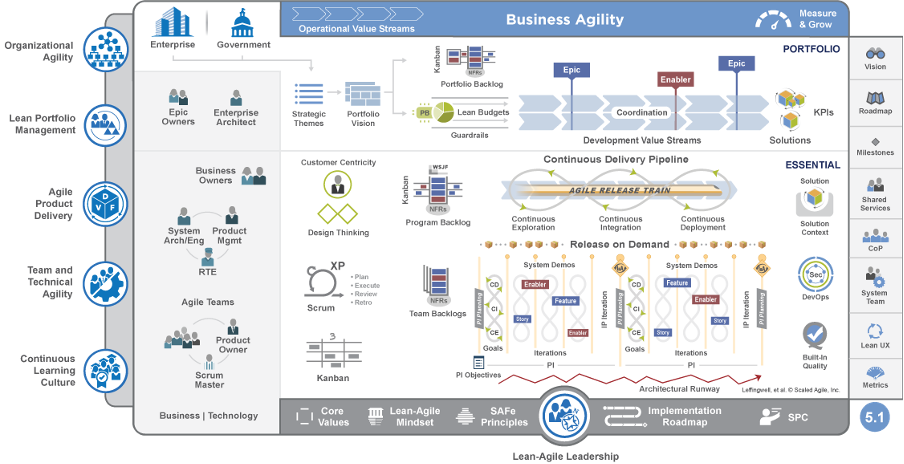
Essential
For those already working in Agile teams, the core aspects of Essential SAFe will seem quite familiar.
We’ll focus our attention on how these teams conglomerate into an Agile Release Train, or ART. As quoted on SAFe 6.0 Framework – “Essential SAFe contains the minimal set of roles, events, and artifacts required to continuously deliver business solutions via an Agile Release Train (ART) as a Team of Agile Teams”.
Essential SAFe combines multiple self-sufficient Agile teams into aligned groups. These groups work independently to deliver a mutual goal, usually defined as Features. This team of teams has its own distinct roles:
The System Architect
Product Manager
Release Train Engineer
These mirror the roles found in traditional Agile teams (Product Owner, Developers, and Scrum Master). Again, much like Agile teams, each ART operates in Product Increments (PI’s). These are a collection of sprints (usually five), and have their own rituals and structures surrounding them, such as the PI backlog, and PI planning meeting.
Essential SAFe is the first stepping stone of scaling Agile: Gathering individual Agile teams to work on shared goals and objectives via single Product Increments or sets of Agile sprints.
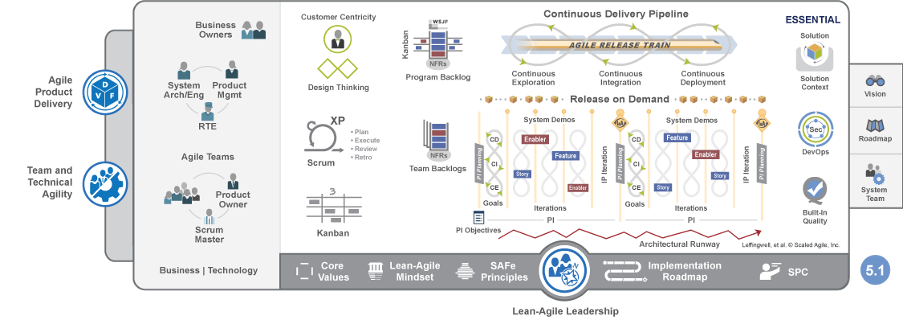
Large Solution
Large Solution SAFe is, quite simply, larger. We know that some businesses choose to exclude this layer and restrict full SAFe to just Portfolio and Essential, but it comes down to your use case and the scale of your organisation. Many of the objects we discussed previously are also shadowed in this layer.
Once again, the core elements expand. Instead of Agile Release Trains, we have SRTs – Solution Release Trains. These are groups of ARTs working in combination to deliver value on a higher scale. For example, the Microsoft suite of Office applications may form an SRT, in which an individual ART is responsible for the development of Office, Excel and PowerPoint respectively. Each Agile team within the ART may then work on specific features or platforms those tools can be found on.
Again, we have some bespoke roles:
Solution Engineer/Architect
Solution Manager
Solution Train Engineer.
These roles mirror those found in an ART, but at a level designed to facilitate and produce value across the entire solution.
Where we would generally work at the Feature level in Essential SAFe, here we have gone a further level up, to Capabilities. Capabilities include many features and epics, though still contained within a single Product Increment (PI).
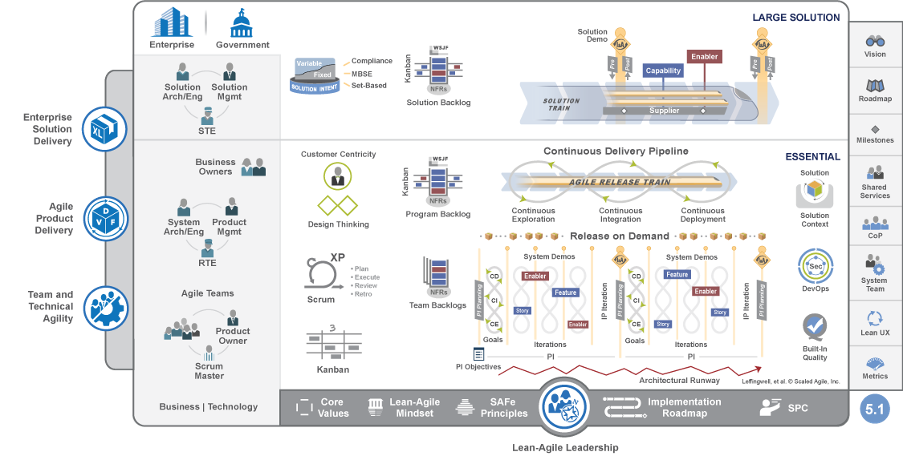
Portfolio
This is where the good stuff happens. As we’ve touched on, the goal of SAFe is to scale Agile ways of working across an enterprise. The previous layers combine multiple Agile teams into release trains of varying sizes up the hierarchy. This in turn enables enterprise agility across 100s of value producers.
The Portfolio layer, however, aligns Agile development methodologies with business strategy. Portfolio SAFe incorporates value streams and budgeting, to integrate enterprise financials and ensure resources (People, Money) are allocated to areas that provide the greatest outcomes to customers. The Portfolio vision and themes (the highest level of work item within SAFe) provide a framework for aligning common goals throughout an organisation and assigning targets for success.
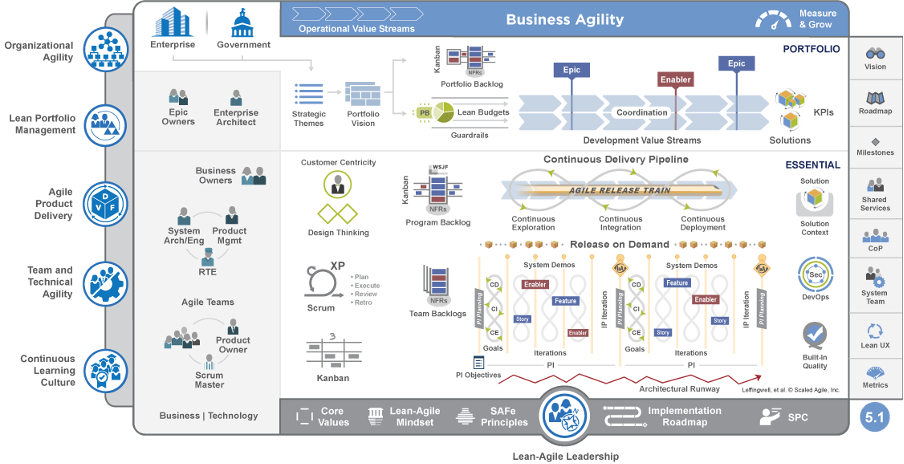
Combining Essential, Large Solution and Portfolio SAFe leads us into the whole picture, or Full SAFe. With Agile Teams, ARTs, SRTs and Portfolio, we have a complete foundation for implementing Agile practices and methodologies at scale across a large enterprise.
With many businesses now looking to incorporate SAFe into their working practices, we have noticed one common question arising time and time again:
How can organisations manage these new Scaled Agile constructs and frameworks? In our experience, Atlassian tools are the answer. Do you need an agile coach? we’ve also discussed at length about what it is and why you need one.
Atlassian and SAFe
As an Atlassian Platinum Solution Partner, we couldn’t write about the Scaled Agile Framework without mentioning Jira Align. The platform is developed specifically with SAFe and Agile at Scale methodologies in mind, and it integrates directly with Jira. With extensive configuration options and complex features to enable the alignment of Portfolio, Large Solution and Agile team management, it’s one of the only tools of its kind.
Atlassian even offers dedicated Scaled Agile assistance. You can combine this with professional services from partners like us: We’ll get you started with the software, develop a roll-out plan and support you throughout your Jira Align and Agile at Scale journey. Together, we will enable you to expand your enterprise’s Agile ways of working according to best practice.
If the Jira Align platform seems too extensive for your particular needs, we’d recommend exploring Jira’s Advanced Roadmaps feature as an alternative. Advanced Roadmaps can be an incredibly powerful layer on top of your existing projects, enabling Essential and Large Solution SAFe, and it comes as standard with a Jira Premium subscription.
Summary
Much like an Agile Release Train, our learning of SAFe also never stops.
If you’re interested in learning more about SAFe, or are looking to implement Scaled Agile methodologies within your business, don’t hesitate to contact us now for a free consultation with one of our dedicated team of consultants.
Also learn about your agile maturity level here.

